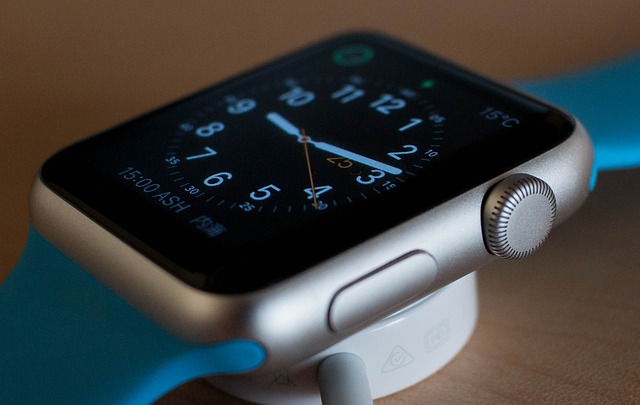Born out of a University of Hawaii Maui College class, the UH AI Racing Team is making history as it develops driverless technology to compete in racing events around the country. The team took on the world’s first-ever autonomous race car event in Indianapolis in October and attended the Autonomous Challenge at the Consumer Electronics Show held in Las Vegas last week. UNIVERSITY OF HAWAII photo
The University of Hawaii Maui College is making history as it helps develop driverless vehicle technology that is being put to the test in some of the earliest autonomous car racing competitions across the country.
Starting small with scaled vehicles and then expanding to go-kart sized models and full-sized Indy Lights racing cars that hit the track in October and January, the University of Hawaii AI Racing Tech team blossomed from UH-Maui College’s autonomous vehicle technology course in the spring of 2020, which stemmed from the Maui Robotic Vehicle Association.
“We had never envisioned this program developing nearly as quickly or as substantially as it did, so it was a pleasant but challenging surprise to be listed as one of the schools that would be allowed in this competition and to finish in the top 10 through the many rounds of eliminations,” said UH-MC course instructor Gary Passon, who is also the executive director of Maui Robotics. “It was really quite an honor for us.”
Citing the importance of science, technology, engineering and mathematics, also known as STEM, Passon said Wednesday evening that he expanded autonomous vehicle technology by connecting with UH-Manoa’s College of Engineering, hoping to give students the “opportunity to work hands-on and prepare them for their future job careers.”
The AI Racing Tech team now includes students and faculty from UH-Manoa, UH-Maui College and the University of California, San Diego, who have been able to work together remotely.
In autonomous car racing, the driver is replaced with a variety of sensors that act as the eyes and ears of the vehicle.
These are supported by a computer that helps to perform the many path planning, tactical and strategic decisions needed to maneuver the vehicle, which takes “thousands and thousands of hours” of work and collaboration, Passon said.
Like artificial intelligence, the software requires engineers to create algorithms to program the car to generate humanlike behaviors and interpret complex sensor data, according to the class website.
In October, the racing team competed in the Indy Autonomous Challenge competition — the first-ever international autonomous race car event — where they placed sixth among highly rated universities and hit their fastest speed ever at 115 miles per hour at the Indianapolis Motor Speedway.
According to the event website, university teams from around the world compete in a series of challenges that test STEM students’ ability to advance fully autonomous vehicle technology and driver-assistance systems “to increase safety and performance.”
“The IAC was kind of a hyper-jump for us, going from the go-kart level local programs to the international competition,” Passon said Wednesday. “What’s been really exciting is taking a small university program and essentially being invited to join 41 other schools to compete for the top 10 positions in that competition.”
Chris Battista, UH AI Racing Tech team member and former UH-Manoa research scientist, said in a news release that “on race day, we pushed our car, our code and ourselves to the limits.”
“We’ve been very pleased and very blessed to compete favorably and finish well and represent Hawaii and Maui and we’re looking forward to continuing that program,” Passon said.
The team just got back from the Autonomous Challenge at the Consumer Electronics Show held in Las Vegas last week. They were one of nine teams from eight countries representing 19 universities competing in the single-elimination contest, with the winner taking home more than $200,000, UH spokesperson Marc Arakaki said Tuesday.
UH AI Racing Tech had the opportunity to take a few laps around the track as an exhibition run to show friends, families and sponsors, reaching 100 miles per hour, but unfortunately had a hardware issue that caused their GPS to go offline, Arakaki said.
“They hit the inner pit wall checking them out for the rest of the day,” he said. “They are still extremely proud of what they were able to accomplish and are super excited for the next race.”
They had hoped to improve on their sixth-place finish at the Indy Autonomous Challenge, but Arakaki told The Maui News that the race still “brought them to the next level and they greatly improved their perception software and vehicle controller.”
Passon said that the squad will be heading to Indiana in May to compete at the EV Grand Prix, an international electric go-kart racing event for college and high school teams, where Hawaii’s AI Racing Tech team will field their completely autonomous go-kart.
Round 3 of the Indy Autonomous Challenge is also slated for August.
The growth of autonomous racing and UH-MC’s program is a sign that the state of Hawaii could have the opportunity to be a more “significant player in the technology industry.”
“It’s primed to happen,” Passon said.
The team is supported by several local organizations and industry corporations, including Maui Robotic Vehicle Association, St. Anthony School STEM program, VectorAero LLC, New Eagle LLC, PointOneNav, Emlid, RockWestComposites and many others.
* Dakota Grossman can be reached at [email protected].
Source: https://www.mauinews.com/news/local-news/2022/01/uh-maui-hits-the-gas-on-driverless-tech/
